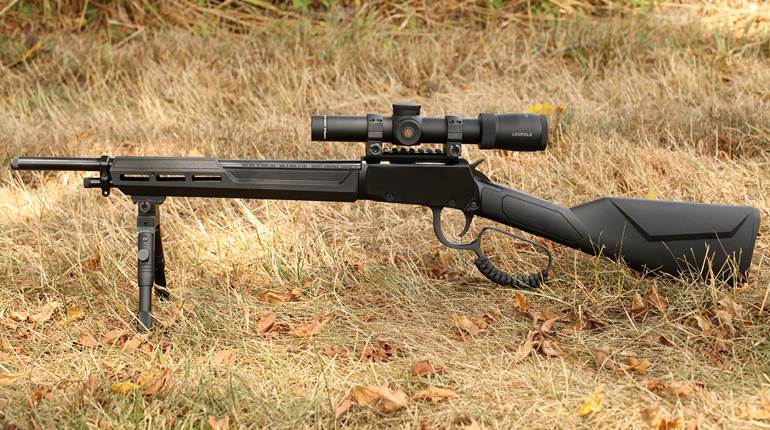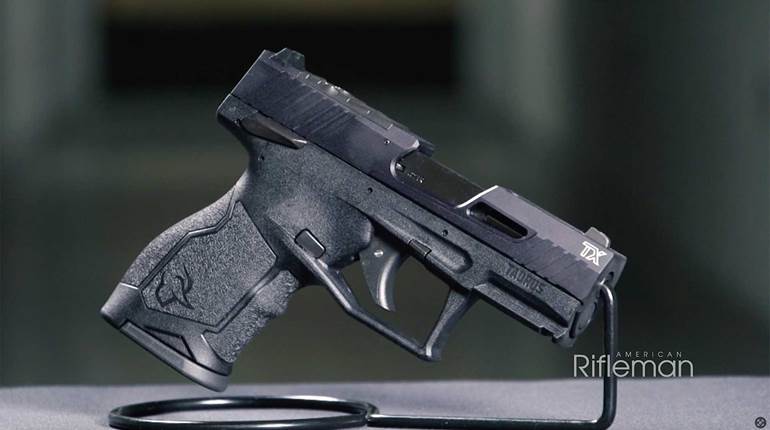
Several decades ago, the late Col. Jeff Cooper characterized the double-action/single-action semi-auto pistol as, “An ingenious solution to a problem that does not exist.” As a burgeoning pistolero, I gobbled up everything the good colonel wrote regarding pistol-craft. Fact is, I have never owned a DA/SA semi-auto pistol, and I have pretty much adopted a similar attitude toward this complex design. I tell you this in the interest of full disclosure. Nonetheless, a whole lot of folks do not share Col. Cooper’s and my viewpoint on this. Virtually every new handgun design is either a DA/SA semi-auto or a striker-fired pistol.
A couple of months ago, I attended a varmint shoot sponsored by Smith & Wesson and ATK/Federal on the Silver Spur Ranch near Encampment, Wyo. There were many guns available to shoot—too many to critically evaluate on a two-day shoot. One of the pistols there was a Walther P22. With its 3.4-inch barrel and weighing in at just an ounce more than a pound, it certainly did not scream “prairie dog pistol,” but its tight design and near-perfect execution intrigued me. I gave it a whirl at prairie dogs and picket posts, and the short-sight radius and my nearly six-decade-old eyes confirmed my first impression of it as a varmint pistol. Later, Matt Rice, the representative for Smith & Wesson—the company with exclusive marketing rights to Walther in the U.S. at the time—sent me a P22 for evaluation.
The P22 is a 3/4-size rimfire rendition of the famous Walther P99 center-fire pistol. One immediately noticeable difference besides the size is the P22’s external hammer. Its frame is made of polymer, and the slide is zinc alloy. Barrel, recoil spring guide, extractor and ejector are made of steel. The magazine is constructed of stainless steel with a polymer follower and bump pad. An interchangeable backstrap allows the grip to be customized to the shooter’s hand. Sights consist of a polymer ramp front sight with a white dot pressed into the slide and a polymer rear sight adjustable for windage with two white dots. Two additional front sights come with the pistol to adjust elevation. The P22 features a novel ambidextrous magazine release located at the bottom rear of the trigger guard. A nod toward the North American market, the magazine drops free with the activation of its latch.
Within the polymer frame is a lockwork consisting of stamped and MIMed steel components. The sculpted and stippled grip is well designed to allow virtually any size hand to be able to control the pistol. Typical of European pistol design, the P22 has a hooked front on the trigger guard. Though considered an obsolete technique by most modern pistol shooters, the hook provides a place for the offhand index finger. Ahead of that is a Picatinny rail for the mounting of lights, lasers and other accessories. Another European penchant is a magazine safety. This pistol will not fire without a magazine in place.
At the range, the little P22 initially showed some ho-hum groups, but that was with bargain-basement bulk ammo. Groups were on the order of 5 inches at 15 yards, and there were some failures to feed. However, once I switched to some quality loads like CCI Velocitor and Winchester Power Points, both groups and reliability improved greatly. Apparently, Walther pistols can be a bit finicky about what they are fed. Both the CCI and Winchester 40-grain hollow-point loads averaged 1.75-inch groups at 15 yards. I chose the 15-yard distance because clearly this is a plinker, and 15 yards is a more typical plinking distance. Reliability also improved with a little Ballistol lubricant, so like a lot of modern guns the Walther likes to be run wet.
The Good and the Bad
The sights are excellent as there is plenty of light between the front sight blade and the rear sight. Adjusting them for a given load might be tedious, especially for elevation, but as far as usefulness, I really liked them. The ergonomics—or the feel of the pistol in my hands—was great for shooting. I had some difficulty with my thick thumbs accessing the mag release, and the safety operation was a two-handed deal for me. Trigger pulls for DA and SA were pretty decent for an off-the-shelf plinker—12 pounds, 2 ounces and 4 pounds, 13 ounces, respectively. One thing that this pistol should come with is an additional magazine. Most semi-autos today come with at least two magazines.
The P22 is available in several variations, including a 5-inch barreled target model, a target military trainer model and several color variations for those with a fashion bent. It didn’t change my mind about DA/SA pistols, but it was a fun gun to shoot, and for those who choose to carry a DA/SA auto as a carry gun, this would make an excellent trainer. I would like to see a threaded barrel available to take a suppressor like the new rimfire prototype can SureFire brought to the Encampment shoot. It should be available within a year, and I have been promised an early sample for review.
With an MSRP of $410 and a street price in the low to mid 300s, the P22 has already become a popular rimfire plinker—and justifiably so.
Model: Walther P22; (800) 331-0852; Waltherarms.com
Type: DA/SA semi-automatic pistol
Chambering: .22 LR
Barrel Length: 3.4 inches (tested), 5 inches
Magazine/Capacity: 10-round detachable box
Rifling: 6-groove, 1:16” RH
Sights: Blade front, interchangeable for elevation adjustment, rear sight adjustable for windage, three dots
Safety: Manual, firing pin block and magazine safety
Frame: Polymer with interchangeable backstrap inserts
Length: 6.3 inches
Weight: 17.6 oz.
Metal Finish: Blued
Accessories: Barrel wrench, front sights, backstrap
Suggested Retail Price: $410






































